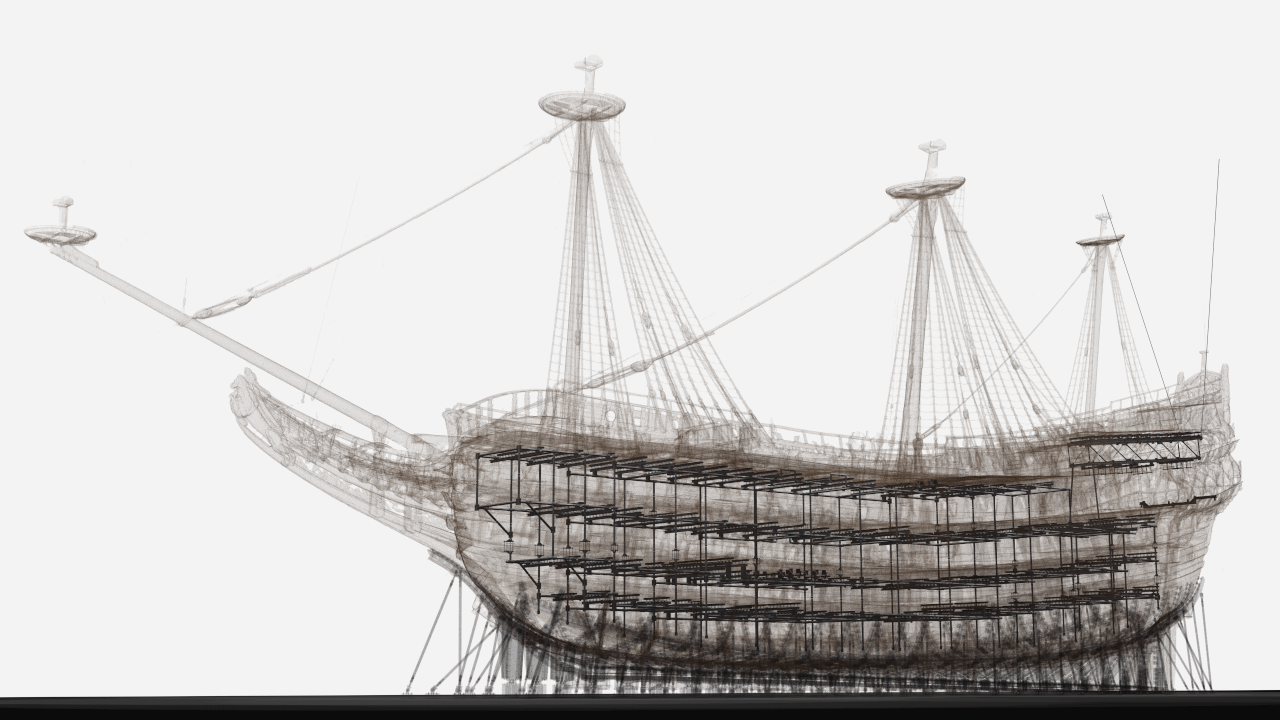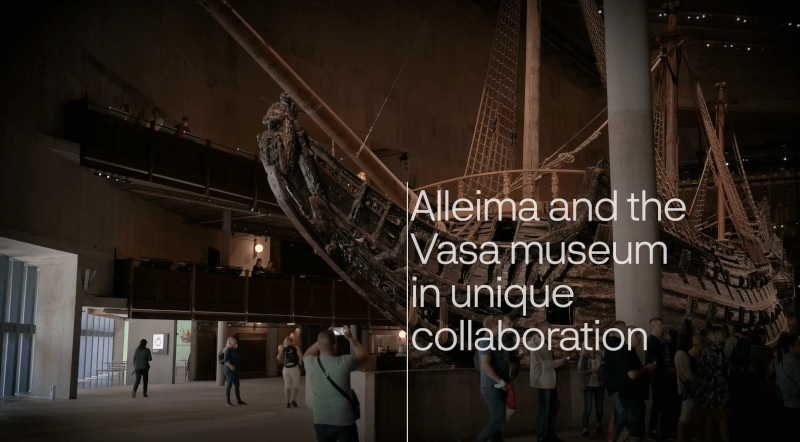Photo ©Alleima
Since 2011, the Vasa Museum and Alleima, then owned by Sandvik, have collaborated to save one of Sweden’s national treasures; the Vasa. Super duplex has played a critical role in saving this sailing ship, which lay on the bottom of Stockholm harbour for nearly 400 years. A new internal super duplex will ensure its survival for generations to come.
By Joanne McIntyre, Stainless Steel World
Stainless Steel World first featured the intriguing Vasa preservation project back in February 2010, when Alleima (then Sandvik Materials Technology) provided hyper duplex bolts to replace the ships original 5,500 iron bolts that had rusted away, endangering the structural integrity of the ship. Considered one of the most famous old ships in the world, the Vasa was built as a warship for Sweden on the order of King Gustav Adolphus, and completed in 1628. However, the ship sank after sailing less than one nautical mile on her maiden voyage.
Ongoing challenge
Today Alleima continues to play a key role as the Vasa Museum faces its biggest challenge since the salvage. With the wood weakened, the ship needs new support as it is very slowly collapsing under its own weight at the rate of 1mm per year. Several years of research and advanced testing at the museum have led to a unique collaboration to develop an internal, custom-made steel skeleton to support and stabilize the ship. The collaboration entails that Alleima becomes the main partner of the Vasa Museum and the “Support Vasa” project.
The Vasa ship is a unique piece of cultural heritage in the world. But despite its impressive size, it is very fragile. Chemical degradation of the wood has caused the hull, which was built from oak in the 1620s, to lose much of its strength. These small movements can have major consequences in the long term. In collaboration with the Vasa Museum, Alleima is providing its expertise and high-alloyed SAF™ 2507 super-duplex stainless steel material for a customised inner steel support for the Vasa ship.
“The inner steel support will extend from the keel to the upper deck. It will help support the loads from the deck and deck beams, slowing the downward movement of the hull. Therefore, the inner steel support must be built from a material that is both strong and light. Thanks to Alleima’s special steel, we do not have to drill as many holes in the Vasa’s hull as would otherwise have been necessary. This is incredibly important for us from a preservation perspective. We estimate that we only have to make about half as many holes in the hull as otherwise would have been necessary,” says Magnus Olofsson, project manager of “Support Vasa”.
Stabilising solution
The inner steel skeleton is built as a truss with tubes. This solution stabilizes the hull, slows down the movements of the ship and distributes the load.
“Alleima’s advanced stainless steel and special alloys are found in the most demanding environments and applications in the world. This material has very high strength, which means that less material is needed for the construction, reducing the weight of the inner steel skeleton. The high corrosion resistance allows the material to come into direct contact with the ship without being affected by the acid that the wood gives off,” says Tom Eriksson, EVP and Head of Strategic Research at Alleima.
“We are proud to contribute to preserving the Vasa ship for the future. This historic project reflects our commitment to innovation and sustainability. The project is unique in both implementation and procurement and shows the power of long-term partnerships between companies and cultural institutions,” says Elja Nordlöf, EVP and Head of Communications at Alleima.
400th anniversary
The work to construct Vasa’s inner steel support is due to be completed by 2028, just in time for the ship’s 400th anniversary.
In 2011, the Vasa Museum and Alleima, then owned by Sandvik, began a long-term research and development collaboration to save the national treasure by replacing the Vasa ship’s more than 5,000 rusty bolts. They were then replaced with specially developed, high-alloy bolts. Thanks to the bolts, the Vasa ship was not only more stable, but also eight tons lighter, which is equivalent to the weight of a full-grown elephant!
Facts about the Vasa
On August 10, 1628, the Vasa cast off from its berth below Tre Kronor castle and slowly left the harbour. It was a mighty ship with three masts that could carry ten sails, measured 52 meters from tip to keel, was 69 meters long and weighed 1,200 tons. However, a gust of wind caused the Vasa to capsize, and the water poured in through the open gun ports, causing the Vasa to sink. At least 30 of the 150 or so people on board died. 333 years later, divers found the Vasa at the bottom of the sea, and on April 24, 1961, the ship was salvaged with more than 14,000 loose pieces of wood. Since the salvage, however, work has been carried out step by step to preserve the ship.
Watch a short video about the ongoing restoration of the Vasa here. https://vimeo.com/1051118420/fdf010403a?share=copy
About this Featured Story
Appearing in the April 2025 issue of Stainless Steel World Magazine, this Featured Story is just one of many insightful articles we publish. Subscribe today to receive 10 issues a year, available monthly in print and digital formats. – SUBSCRIPTIONS TO OUR DIGITAL VERSION ARE NOW FREE.
Every week we share a new Featured Story with our Stainless Steel community. Join us and let’s share your Featured Story on Stainless Steel World online and in print.




